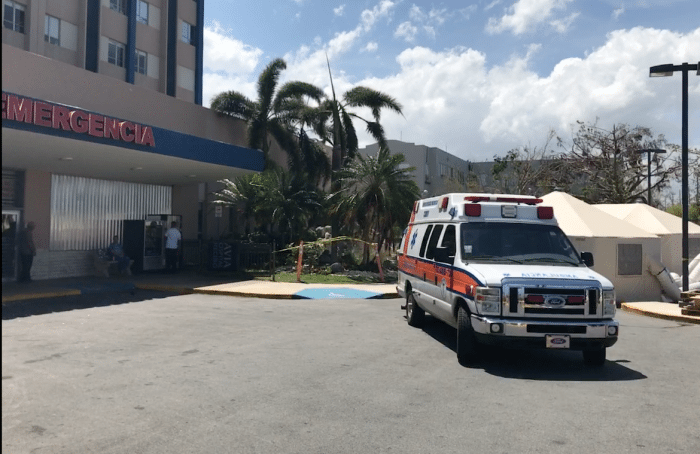By Omaya Sosa Pascual
UPDATE, October 10, 2017: The Puerto Rican government announced on Tuesday morning that the official death count now stands at 43. Later on Tuesday, it increased to 45.
SAN JUAN, PUERTO RICO — The official figure of fatalities related to Hurricane María offered to date are just a small sample of total fatalities that have occurred in Puerto Rico since the devastating storm, confirming that death toll will continue to increase, according to the heads of the agencies in charge of processing deaths.
Considering that the annual average of deaths in Puerto Rico is about 29,000 (at best), only 17% of the total deaths in the last two weeks have been examined.
Puerto Rico’s Secretary of Public Security, Héctor Pesquera, admitted this in an interview with the Center for Investigative Journalism (CPI in Spanish), when asked to explain how the latest official figure revealed last Tuesday at 16 when President Trump visited the island had increased to 34 people hours after he left, and 39 on Sunday. According to Pesquera, that figure was reached after analyzing in detail, with interviews with relatives, the 200 deaths processed by the Puerto Rico Forensic Sciences Institute, located in San Juan, from September 20 until Friday, September 29.
All other deaths that occurred in that period, which would exceed the average number of deaths recorded every two weeks in Puerto Rico, have not been analyzed. In fact, since last Thursday, it was not yet known how many people died in Puerto Rico during those dates, as death certificates and burial permits are being generated manually in the Demographic Registrar’s regional offices in the absence of electricity and communications systems.
The CPI knew that in a single hospital of the island’s 69 hospitals, —Hospital Pavía in Arecibo— 49 deaths were registered during the first two weeks of the crisis.
Registrar Director Wanda Llovet said she had to establish an antiquated system to start processing information. As she explained to the CPI, Llovet began to deliver paper documents to the agency’s driver last Wednesday on daily basis. These documents would be driven to the Registrar’s headquarters in San Juan, which already had the power to enter the data into the system. After that, electronic submissions to the Centers for Disease Control and Prevention (CDC) system would begin, automatically encrypting the manual entries, according to the emergency and disaster death guides in the CDC’s official cause of death book, ICD-10.
Llovet explained that these CDC guides, which she has distributed to hospitals and funeral homes since September 22, indicate that in cases of emergencies and natural disasters, the doctor who certifies the death has to add the circumstances in which the death occurred and not only the medical cause of death, to determine if it was influenced by circumstances caused by the emergency such as lack of electricity, mobility, and medical services and supplies.
Eighty percent of the death certificates sent to the CDC’s system usually generate a categorization in 24 hours, and the remaining 20 percent of the cases usually generate doubt for some reason, and have to be revised manually. The information about the first group of deaths will have been received by this Friday, said Maria Juiz, Director of the Registrar’s Quality and Vital Statistics.
Pesquera, who was on the defensive about the questioning of the number of official deaths by the CPI last week and directly denied that there were accumulated corpses in island hospital morgues (as reported by this media outlet), was more open last Thursday, saying that he expects death toll to continue increasing. He admitted that there will possibly be many deaths linked to María which will remain unaccounted for because the cases the CDC will process depend on doctors’ making proper notes of the causes of death, as they will not be able to interview the relatives of all the deceased. From his conversations with the members of the Hospital Association this week, Pesquera believes that such annotations have not been done according to the CDC guidelines that have been distributed to them.
According to Pesquera, any citizen who believes that their relative died in circumstances related to María should visit the Forensic Sciences Institute located in the Río Piedras Medical Center to report their case so that it can be processed as such. The same must be done by the relatives of the 69 people listed last Tuesday in the official list of missing persons, given that the Forensic Sciences Institute and the Demographic Registrar’s staff that have been working in that agency will be looking for any matches that may exist between those names and the names on the death certificates that began to be processed at the registry headquarters last Thursday.








As of October 6, the number of missing people was at 95.













